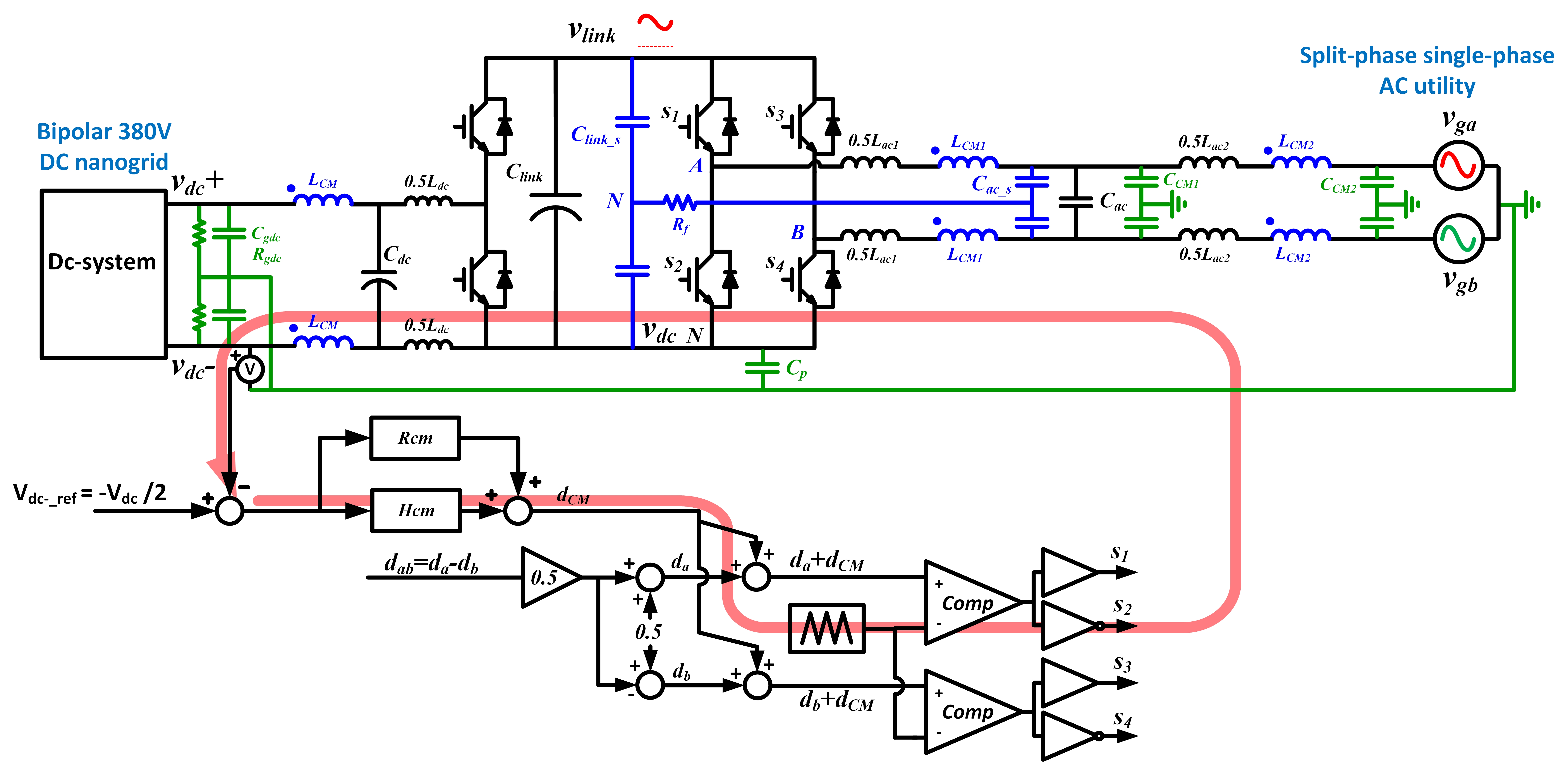LIBRARY
Low Frequency Common Mode Voltage Control for Systems Interconnected with Power Converters

In this paper, a CM duty cycle injection method is proposed to actively control the dc bus-to-ground voltage. As a result, the dc bus voltage is symmetric and the low-frequency voltage ripple is suppressed. The operation range of the proposed method is proven to be easy to satisfy. The impact of different voltage levels and asymmetric ac grounding is analyzed, and the complete CM circuit model was derived and its performance was verified by using hardware, based on which the closed-loop controller is designed. The experimental resultsverify the usefulness of the control method during steady state and transient operation. The control method was also generalized to a three-phase ac scenario.
To verify the proposed low-frequency CM voltage control method, a 10-kW bidirectional ac/dc converter is built. As illustrated in Fig. 2(a), after enabling the control loop, the dc bus voltage is adjusted to be symmetric to the ground. The low-frequency ripple is also suppressed. Fig. 2(b) and (c) show the steady state ac voltage, ac current, positive and negative dc bus voltage, with and without the CM voltage control.























































































